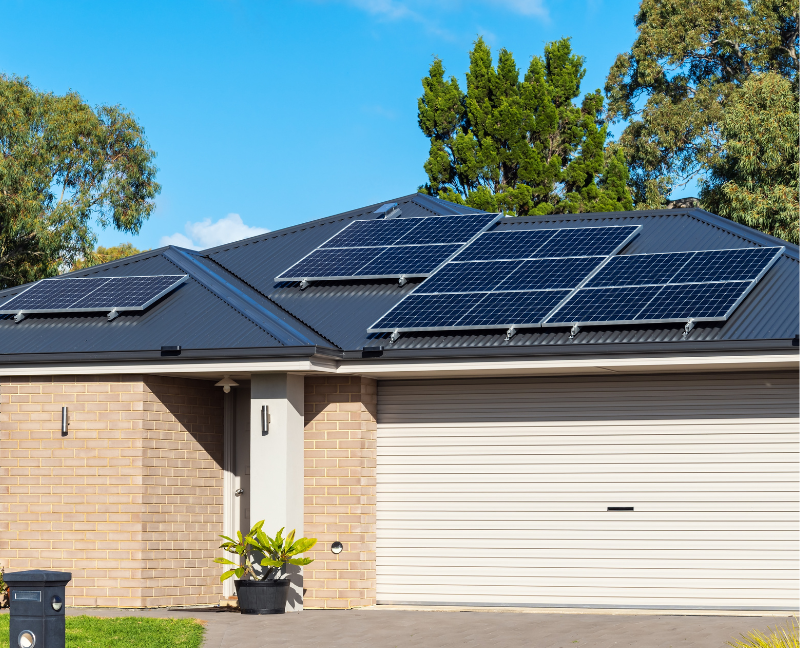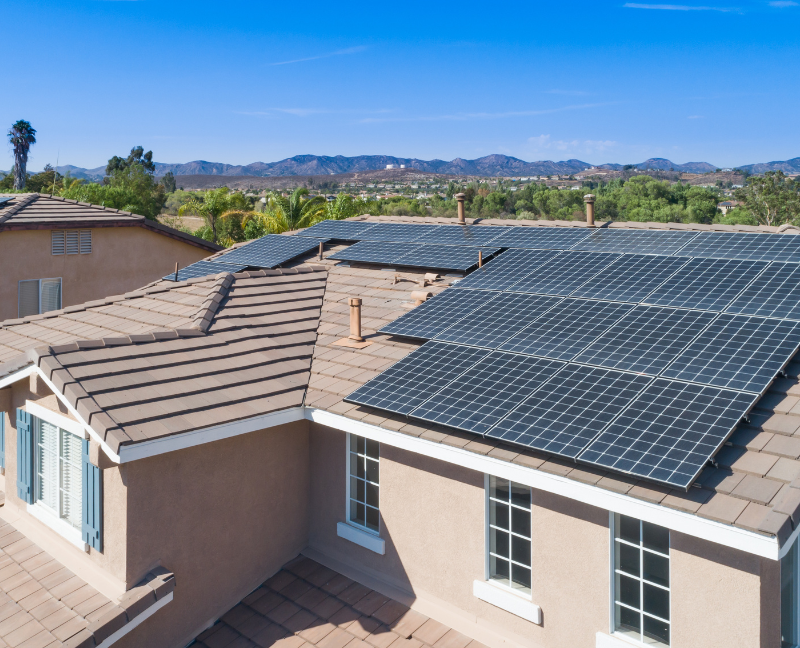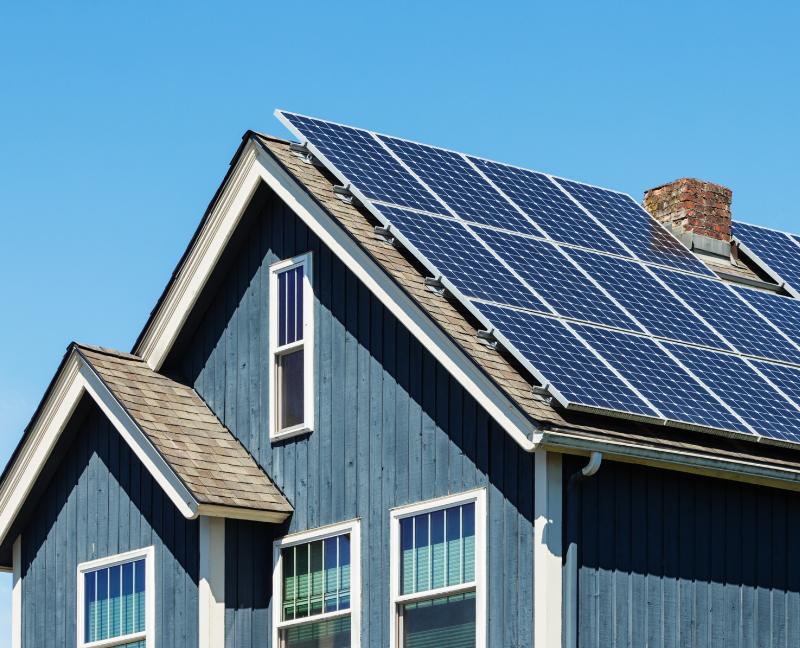Gone are the days when traditional roofing materials included asphalt and concrete tiles; now, there's a new competitor that focuses on using sustainable energy -- solar roofs.
A huge number of homeowners seeking energy efficiency end up choosing solar roofs because of several reasons. For one, it combines innovation and functionality, and two, it helps lower electric bills and carbon footprint.
In this post, we'll dive deeper into how solar roofs work, their pros and cons, and things to consider if you plan to install one in your home.
But First, What Exactly Is A Solar Roof?
Like a typical roof, it protects the home and its dwellers against weather-related issues, including rain, wind, and snow. However, it's more than that as it can produce its energy.
PV panels or solar shingles are directly incorporated into the roof to harness sunlight's power—a smooth, appealing, energy-generating roof.
How Does Solar Roof Work?
Solar roofs generate electricity using cutting-edge technologies. These roofs use monocrystalline or polycrystalline silicon solar cells in solar panels or tiles.
When sunlight hits these cells, an exciting process happens. Electric current flows from your solar roof's photovoltaic (PV) tiles when sunlight strikes them and is absorbed by solar cells. Your solar inverter receives this direct current (DC) energy and transforms it into alternating current (AC) energy, which powers your house.
AC powers most homes and appliances. An inverter converts DC electricity into AC before usage. Usable electricity can run home appliances or be supplied back into the grid, resulting in electricity bill credits. Solar technology in roofing materials like tiles and shingles lets homeowners preserve their home's appearance without installing cumbersome solar panels.
What Are The Advantages Of Solar Roofs?
Solar roofs benefit both homes and the environment; plus, it's aesthetically appealing. Below are some advantages of solar roofs:
- Environmentally-Friendly
Today's climate-conscious world emphasizes the importance of renewable energy sources. Installing a solar roof benefits the environment in more ways than one:
- Lesser Carbon Footprint: The amount of traditional fossil fuel-based electricity required decreases with each kilowatt-hour of solar energy generated. Less carbon emissions will result, which is one of the main causes of global warming. Homes that have solar roofs move toward a low-carbon future and support the worldwide effort to combat climate change.
- Reducing Emissions Of Greenhouse Gases:Installing solar roofs directly lowers emissions of greenhouse gases. We greatly lessen the need for non-renewable energy sources, which are infamous for releasing toxic gasses into the atmosphere, by utilizing the sun's pure energy.
- Financial Advantages
Solar roofs seem to make a lot of financial sense, in addition to the obvious benefits they provide to the environment:
- Reduced Electricity Expenses: Lower electricity expenses are the most significant advantage of a solar roof. Solar power reduces grid dependence and electric costs.
- Possibility Of Tax Benefits And Refunds: State agencies and governments pushing for the use of renewable energy. Consequently, the average cost of solar installations can be considerably decreased for homes by taking advantage of tax credits, rebates, and other financial benefits.
- The Credit For Federal Taxes: This is one example of a benefit that can cover a significant percentage of the costs associated with the installation.

- Ensure Energy Autonomy And Resilience
The installation of a solar roof allows households to achieve greater energy autonomy:
- Protection Against Increasing Power Prices: The cost of traditional energy might fluctuate. You protect yourself from future increases in energy expenses with your energy production source.
- Enduring Power Outages With Reliability: When combined with residential batteries or other energy storage systems, solar roofs can generate electricity even when the grid is down.
- Value Of Property Rising: The value of homes with solar roofs frequently increases. The growing demand for energy-efficient homes makes residences with solar panels installed more appealing to prospective purchasers.
- Warranty And Long-Term Durability: Prominent solar products with extensive warranties—like the Tesla Solar Roof—ensure long-term performance. These roofs are long-lasting since they are made to resist severe weather.
- Visually Appealing: Homeowners may now maintain the visual attractiveness of their properties without compromising thanks to goods like solar shingles and solar tiles. Solar roofs provide an elegant alternative without the bulkiness of standard solar panel systems, blending in perfectly with the architectural style.
What Are The Disadvantages Of Solar Roofs?
- Expensive Costs Of Installation
One of the major drawbacks of solar energy is the high initial costs of the equipment and installation. However, leasing options can lower your initial expenses if money is a concern. Should you decide to purchase, you will have to occupy your house for a certain amount of years until the system becomes self-sufficient. Renters are less suitable for this long-term investment than property owners.
- Decline Energy Production During Bad Weather
One of the main drawbacks of solar energy has been the brief drop in energy production during inclement weather. However, because of advancements in battery technology, the impact of days with minimal solar energy is decreasing.
Alternatives to outdated solar energy storage technologies, such as lead-acid batteries, are emerging. Higher power at a reduced cost is provided by lithium-ion batteries. Batteries built with nickel have an incredibly long lifespan. New technologies promise large-scale and long-lasting power storage, such as flow batteries.
- It's Not For Everyone
When it comes to solar roofs, orientation matters. Your roof won't be able to collect enough solar energy if it isn't facing the sun. Flat roofs are typically less effective than roofs that tilt toward the sun.
Solar panel installation is facilitated by roofing materials including metal, tiles, and asphalt shingles. The cost of installation might be higher if your space is constructed of different materials. The capacity of roofs to hold solar panels contributes to their energy-efficient characteristics.

Is Solar Roof Worth It?
Installing a solar roof benefits the environment and your finances as well. However, to know if a solar roof is worth it for you and your home, you have to consider a few things first:
- Evaluate The Roof's Compatibility
Before adding solar panels or tiles, check your roof's support. Considering the roof's condition can prevent future issues and prolong the life of your solar system. Normally, it's better for new roofs.
Some roofing materials need to be more suitable for solar installations. If you have a concrete tile roof or a steel roofing tile, visit a roofing and solar firm to understand the installation consequences. Traditional asphalt roofs are usually compatible. The roof design, slope, and orientation also affect solar system effectiveness.
- Considering Financial Aspects
Solar roofs are expensive, so evaluate all costs:
- Initial Investment And Financial Planning: Besides solar product costs, installation costs depend on project complexity and solar business. Get numerous quotations, consider upfront fees, and check your budget beforehand.
- ROI And Repayment Time: Despite the expensive initial expenditure, energy savings can be substantial. Calculate ROI by considering energy bill savings, property value increases, and solar tax credits and rebates.
- Power Use And Dimensions Of The System
Solar roofs work best when tailored to your home's energy needs:
- Evaluate Power Needs And Use Trends: Before choosing a suitable solar system size, check your household's energy needs by reviewing your electricity bills. This gives you an idea of how much solar energy your property needs.
- Finding The Optimal Solar System Size: Discuss your energy needs with a solar firm to establish the best system size based on current and future use patterns.

- Local Laws And Authorizations
Local laws can differ; therefore, it's essential to know what the rules are where you live:
- Know Building And Zoning Codes: Solar installations may be subject to local zoning or building codes.
- Permit Application Process: Most solar systems need permits. Consult local authorities or the solar company you run to learn about the permitting procedure and ensure your solar installation meets local requirements.
Upkeep And Considerations For The Long-term
As with any significant home upgrade, installing a solar roof is just the beginning. To extend the life of your investment, you have to take care of it just like your other assets.
- Tasks For Ongoing Maintenance
Low-maintenance solar roofing. Basic tasks can optimize system performance:
- Cleaning Up: Dirt, debris, or snow may accumulate on solar panels or roof tiles, depending on location. Cleaning maximizes power production and efficiency. Consider employing pros for steep roofs out of caution.
- Monitoring The Performance Of The System: These solar systems feature tools to monitor energy production and system health. Please check this regularly to spot any faults or performance decreases.
- Coverage And Repairs Under Warranty
Knowing your warranty and repair needs can prevent problems:
- Addressing Potential Problems: Solar modules might fail despite their endurance. Do not hesitate to contact your solar business for diagnostics and repairs if your energy output drops significantly.
- Duration And Replacement: Power output and product warranties for most solar products are 25 years. Performance degrades over time, but lifespan generally exceeds this. Replace or upgrade, especially as solar technology progresses.
Conclusion
Solar roofs are more than just eco-friendly—they represent the future of clean energy and sustainable living. The move toward renewable energy sources like solar power is vital to meeting the world's energy needs sustainably.


Thank you for the auspicious writeup It in fact was a amusement account it Look advanced to more added agreeable from you By the way how could we communicate